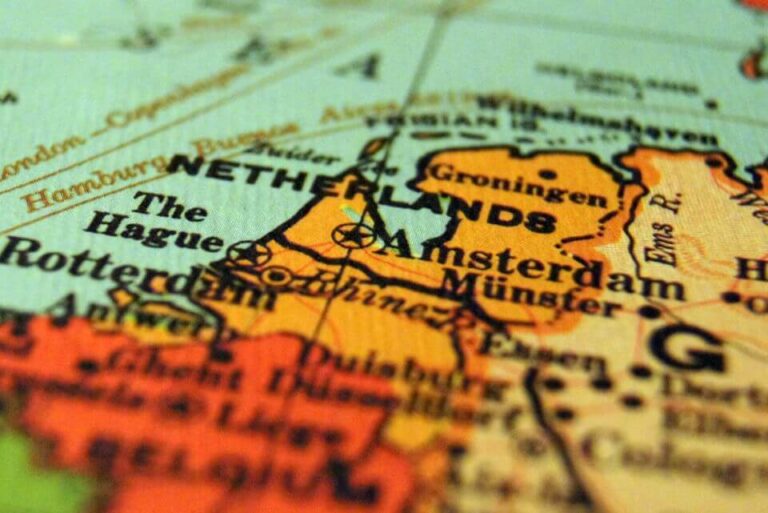Glyfada, Greece: Where Ancient History Meets Modern Elegance
Nestled along the sun-kissed Athenian coastline, Glyfada, Greece, is where time-traveling through history feels as natural as sipping a frappe by the sea. From its origins as an ancient haven for the privileged to its modern-day allure as one of Athens’ most vibrant and affluent suburbs, Glyfada beckons with a captivating blend of history, culture, and breathtaking landscapes.
In this article, we embark on a journey to unravel the rich tapestry of Glyfada, discovering its fascinating history, cosmopolitan present, and unforgettable experiences. Let’s dive into the world of Glyfada, where coastal charm and sophistication intersect.
Exploring the Rich History, Vibrant Culture, and Breathtaking Landmarks of Glyfada, Greece.
Key Takeaways
- Glyfada’s History: Once a summer haven for ancient Athenians, Glyfada evolved into a modern suburban hub, enduring through WWII to become a sought-after residential area.
- Population and Diversity: With a population of around 92,000, Glyfada boasts a diverse community, blending Greek residents with expatriates.
- Landmarks and Activities: From Marina Glyfada to its stunning beaches and golf club, Glyfada offers a wealth of attractions for leisure and sports enthusiasts alike.
Q: What is the best time to visit Glyfada?
A: The optimal time to explore Glyfada is during the summer months (June to August), offering warm weather and vibrant experiences. However, Glyfada’s allure extends throughout the year, promising unique delights in every season.
Related: Exploring Kallithea, Greece
Glyfada History
Glyfada, Greece, nestled along the picturesque Athenian coastline, has a storied history dating back to ancient times. Originally known as Anagyrous, it was a favored summer destination for wealthy Athenians. As the 19th century unfolded, Glyfada transitioned into Athens’s more permanent suburban hub. By the early 20th century, it emerged as a thriving seaside resort town.
Glyfada was a significant location during World War II, hosting a major German airbase. The town endured heavy bombardment from the Allies, but in the post-war era, it valiantly rebuilt itself.
In recent decades, Glyfada has become one of Greece’s most sought-after places to live, celebrated for its beautiful beaches, upscale shopping boutiques, gourmet restaurants, and a vibrant nightlife scene.
Related: Agios Nikolaos, Greece
Glyfada Population
Glyfada’s population is approximately 92,000, making it Athens’s fifth most populous suburb. Most of its residents are of Greek origin, but a considerable expatriate community also calls Glyfada home, adding an international flair to the area’s diverse culture.
Related: Discover Acharnes
Glyfada Landmarks
Marina Glyfada: Marina Glyfada ranks among Greece’s largest marinas, where luxury yachts and boats gently sway on the crystal-clear waters. The marina also offers shopping, dining, and lively nightlife venues.
Glyfada Beach: Renowned for its pristine blue waters and soft sands, Glyfada Beach stands as one of Athens’ premier coastal destinations. It beckons visitors with swimming, sunbathing, and various water sports opportunities.
Glyfada Golf Club: Glyfada Golf Club is a must-visit for golf enthusiasts. It boasts one of Greece’s oldest and most prestigious 18-hole courses and breathtaking views of the Aegean Sea.
Glyfada Sports Center: This state-of-the-art complex offers many indoor and outdoor sports facilities. Notably, it houses the Panathinaikos Olympic Stadium, a historical venue that hosted the 1896 Summer Olympics.
Glyfada Facts
Glyfada is home to Greece’s largest Greek Orthodox church, the Church of the Assumption of the Virgin Mary. It is a spiritual and architectural marvel, drawing visitors from far and wide.
In addition to its natural and architectural wonders, Glyfada boasts a range of museums. Notable among them are the Glyfada Municipal Museum, the Glyfada Nautical Museum, and the Glyfada Museum of Modern Art.
Celebrities and politicians often go to Glyfada to bask in its charm, while the suburb’s international schools make it an attractive destination for families with children.
Conclusion
Glyfada, Greece, a sublime coastal suburb, perfectly blends history, culture, and natural beauty. Whether you seek a tranquil beach vacation, a luxurious shopping experience, or a vibrant night out, Glyfada is your ultimate destination.
Glyfada FAQs
Q: What is the best time to visit Glyfada?
The best time to visit Glyfada is during the summer months (June to August) when the weather is warm and sunny. Nevertheless, Glyfada’s beauty is ever-present, offering unique experiences in every season.
Q: How do I get to Glyfada?
Glyfada is easily accessible via public transportation from Athens. Metro Line 3 provides direct access, and several buses serve the suburb. If arriving by air, Glyfada is approximately 20 kilometers from Athens International Airport, conveniently accessible by taxi or rental car.
Q: What are the best things to do in Glyfada?
Glyfada offers a diverse range of activities:
- Relax on Glyfada Beach
- Take a refreshing swim in the Aegean Sea
- Enjoy a round of golf at Glyfada Golf Club
- Explore the luxury boutiques and stores in Marina Glyfada
- Savor delectable cuisine at the numerous restaurants in the area
- Experience the vibrant nightlife at one of Glyfada’s bars and clubs
Q: Where should I stay in Glyfada?
Glyfada provides a variety of accommodation options catering to different budgets and preferences. Some popular choices include:
- Four Seasons Hotel Athens
- Astir Palace Hotel & Resort
- Divani Caravel Hotel
- Cape Sounion, Grecotel Exclusive Resort
- Vouliagmeni Suites
DID WE MAKE A MISTAKE?
Submit a correction suggestion and help us fix it!
- Exploring Ohio: Unveiling the Gems of the Buckeye State - May 11, 2024
- Exploring the Ancient Marvel: Corinth, Greece - May 8, 2024
- Discover Acharnes: Where Ancient History Meets Modern Vitality - May 8, 2024







